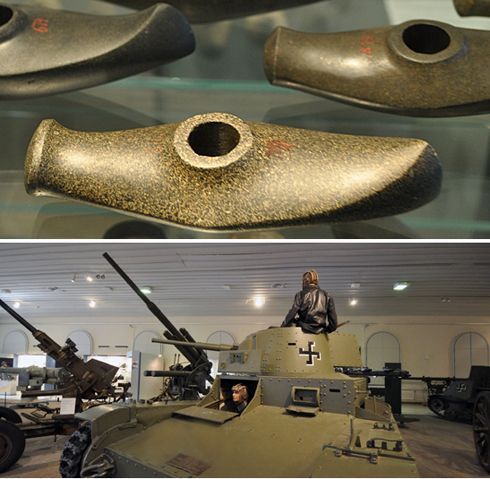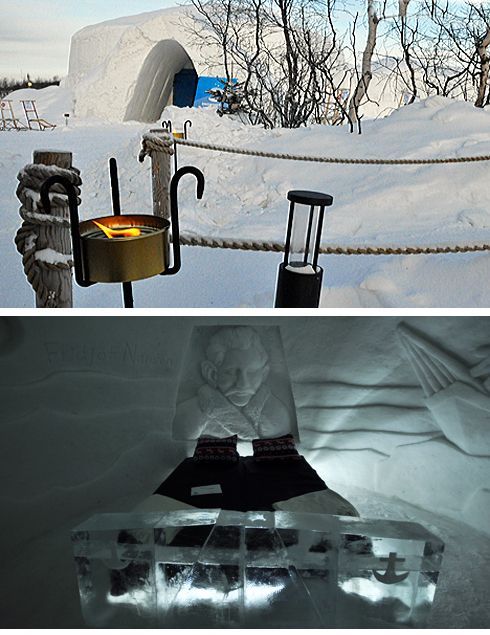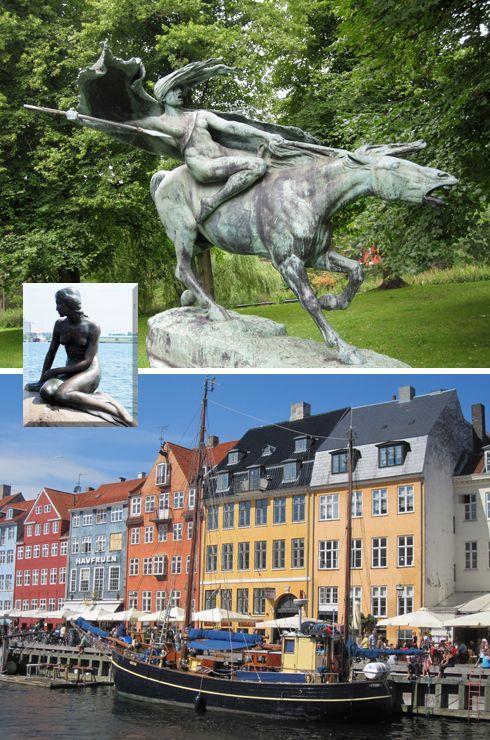Article
Should American Tourists Make Their Own Exit from Europe? Part 8
Author(s):
In the 8th part of Eric Anderson's trip across Europe, he braves Scandinavia.
[Author’s note: I am originally Scottish and Northern European, and thus may have bias.]

Resentments that followed the American Civil War revealed issues, differences that seemingly had something to do with geography. One could read opinions then that the North, for example, was industrious, the South a bit lethargic. Arguments ranged from “This was nonsense,” to thoughts that maybe the differences lay in climate rather than geography; who could be industrious in the sapping heat of the South?
Interestingly enough, climate variations are sometimes offered as a reason for similar variables in activity elsewhere such as why North America differs from South America beyond politics, and why the Scandinavian countries are more successful (whatever that means) than the Mediterranean countries. It goes further: Northern Spain feels it is more flourishing and more part of the dynamics of European commerce than Andalusia, the classic and romantic land of southern Spain; and we have been told by guides in Milan in the north of Italy that their people there resent the subsidies Rome gets from the government.
Whatever, and it would perhaps cause offense if this is pursued further, but visitors to the three Scandinavian countries might be intrigued to find how successful all three are. The countries are liberal and generous in sharing their assets with their peoples. They have sound education, and English is spoken here more readily than in any European country save the UK itself. In the east, tiny Finland has survived the part of World War II where it was attacked by the vast forces of Russia. It is digitally comfortable; at one time there were more cell phones per capita in Finland than in any country. And the modality Bluetooth was named after the Scandinavian king Harald Bluetooth who ruled this wide-spread Nordic land 958 AD to 985 AD.
Finland is wealthy because it invested in communications and IT at exactly the right time, and its tax structure does not discourage the adoption of cutting-edge technologies. Sweden may be wealthy because it has avoided the poverty of being in World Wars... by remaining neutral. And Norway is rich, but less so now, because of North Sea Oil
Finland
(Photos by the author)

Finland is likeable, a spunky little country that stood up to the Soviets when it was invaded. Most Americans would not want to explore the wilds of Lapland but would love Helsinki. We jumped a cruise ship from St. Petersburg to Helsinki because we had been to St. Pete before but not Helsinki. We had no regrets. I wanted to see the city's tribute to Sibelius and the statue of my high school hero, Paavo Nurmi. He was before my time but he won five Gold medals in one Olympics in Paris in 1924 (which would make him any schoolboy's hero.)

In Helsinki's museums, whether you are viewing the ancient weapons of the Vikings or the captured German tanks of World War II, there's a lot to see in this walking city.
Sweden
Not sure if all those popular Nordic crime books and movies have increased travelers' tastes for Sweden; I believe they have added to our interests but tourists don't really see minor crime against visitors to the degree you might see, for example, in Rome or Naples. Images: Stockholm waterfront; the sailing ship Vasa in the Vasa Museum where it is sadly deteriorating as the wood weakens a few millimeters a year due to its low pH; the Nobel Museum (Nobel’s death mask and his last will and testament)..
Norway
Norway is fun. The Norwegians are as happy as Australians; neither takes themselves too seriously which is refreshing. “Tell us about Norwegians,” I once asked an Oslo guide. “First, we are the tallest people in Europe!” he said, “Taller even than the Dutch.” I thought about that for a moment. He was right that national genes play a part in height, but I have read that the basic presentation of body height is how much protein your femur gets between the ages of 6 and 12 and for years Norway was under Nazi occupation but probably genes beat nutrition. Our guide was not finished: “And we may well speak better English than any other European country...And...”
“And ...,” I questioned, he replied with a grin, “We are filthy rich.” As he spoke Oslo was undergoing a magnificent infrastructure change to make it one of the most exciting and modern capitals in Europe though whether the now reduced return from North Sea oil will affect that is not clear.
Few maritime museums offer visitors what the Viking Ship Museum does in Oslo. It has the world's two best preserved wooden 9th century Viking ships with explanations carefully laid out in English.

You can head north to more distant Norwegian places either by car or, better, by the celebrated mail-carrying cruise line Hurtigruten. The company map shows how its ships hug the coast. We went to the top of Norway and even checked out the Ice Hotel in Kirkenes. In the north in season you will see the Northern Lights but if you are on a moving ship you will not have the most stable base for your tripod so you should not have the most intense hopes! A stop overnight in Bergen is a thrill for photographers. The Leprosy Museum there is worth a visit unless physicians would feel that was a busman's holiday.
Denmark

Those who have researched Scandinavia probably know what they want to see. For Copenhagen in Denmark it might, of course, include the mermaid statue but those familiar with the Ride of the Valkyrie which Stephan Abel Sinding statue created ; it sold for about $5550 at Christie's in London way back in 1905 have a greater treat in store — his statue in Copenhagen which shows more fury -- he has replaced the elevated sword with a leveled lance, in surely a more powerful pose. Photographers will find Copenhagen's more nautical role in Nyhaven where colored gaily pained homes recall the great sailing trade days of Denmark.
The Andersons, who live in San Diego, are the resident travel & cruise columnists for Physician's Money Digest. Nancy is a former nursing educator, Eric a retired MD. The one-time president of the NH Academy of Family Physicians, Eric is the only physician in the Society of American Travel Writers. He has also written five books, the last called The Man Who Cried Orange: Stories from a Doctor's Life.




